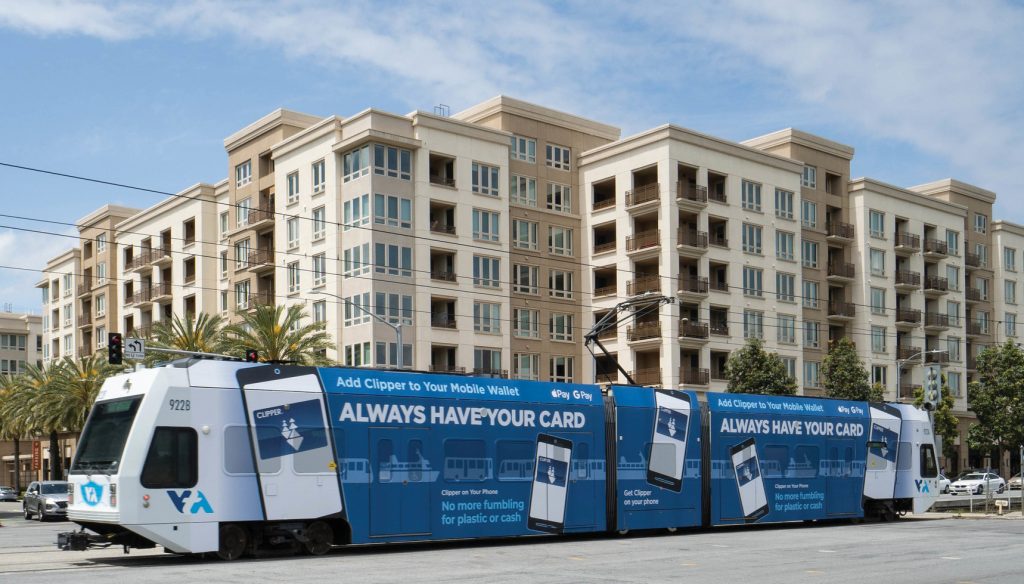APTA Member Profile: Carolyn Gonot
6/5/2024

General Manager & CEO
Santa Clara Valley Transportation Authority
San Jose, CA

Please describe VTA’s size and scope.
The Santa Clara Valley Transportation Authority (VTA) is an independent special district that is responsible for light rail, bus, paratransit operations, and transportation planning, and serves as the county’s congestion management agency. VTA is building the 16-mile BART extension into Silicon Valley with six stations, including a cutting-edge single-bore tunnel through downtown San Jose. With 2,400 employees, VTA services approximately 25 million passengers annually across its systems.
Please describe some of the challenges for public transit in your community and how you are addressing them.
Insufficient funding for public transit operations is always a challenge. The ongoing Bay Area housing crisis is pushing lower-income residents to move further into the suburbs. This shift reduces transit demand in the urban core, where transit is most effective, and increases demand in distant suburbs, where transit is less efficient.
In response to a shift in transit demand schedules, VTA implemented a new network in late 2019 that offers more consistent service throughout the entire day, contributing significantly to our strong ridership growth. Our weekend transit demand is robust, prompting us to enhance our weekend services to accommodate more riders.
What do you see as the biggest challenges and opportunities facing the public transportation industry in general over the next few years?
Telework and tele-school practices have significantly reduced commuter demand for public transit, altering traditional peak travel times and diminishing ridership during what were once the busiest parts of the day. Adapting to this new normal requires reevaluating and restructuring services to align with changing travel patterns and user needs.
The arrival of new sources of “big data,” such as information from cellphones and connected vehicles, provides a wealth of insights into travel patterns. This data allows transit authorities to better understand and anticipate rider demand, enabling us to tailor transit networks more precisely and efficiently.

How do you see the historic investment in public transit affecting VTA?
Through increases in Sections 5307 and 5337 formula funding, VTA is able to increase its investment in its core light rail and bus system, providing service to our community that is safe, frequent, and reliable. These funds will also allow VTA to identify and test new technologies in our light rail fleet, ultimately reducing long-term capital costs, opening the door to extensions to close the gap in first mile/last-mile needs, while achieving a more sustainable impact on our climate.
Through the SMART program, VTA will be able to improve the transit experience for many of our riders through mobile devices and technology, such as bicycle storage availability, service alerts to VTA on route issues so we can pro-actively address any problem, and overall integration with trip-planning applications to increase reliability and reduce uncertainty for customers needing our service.
And lastly, through additional funding provided in the Capital Investment Grant program, VTA is anticipating a Full-Funding Grant Agreement to support the -second phase of our BART to Silicon Valley project.
Please describe VTA’s workforce development strategies.
VTA is a national model for a labor/management partnership with ATU Local 265 that started in 2008 known as Joint Workforce Investment (JWI). The core of the partnership is the peer mentoring program for light rail and bus drivers, that helps to acclimate new drivers to the new career and focuses on soft skills to incorporate in the course of their job, and also addresses challenges with sleep, diet, health and well-being, work schedules, and work/life balance. The peer mentoring program has improved retention and attendance and cut back on accidents.
There are five disciplines in the JWI apprenticeship program: light rail and bus drivers, maintenance, track workers, and overhead line workers. Through our education partner, Mission College, apprentices receive 18 college units upon completion of the program. Employees are encouraged to pursue opportunities on the career ladder within the agency.
VTA has also started a networking program called Women Innovating Transit (WIT) to encourage and attract women frontline workers, where issues specific to women are addressed and advocated.
What attracted you to the public transportation industry?
When starting out in my career, I worked for a transportation engineering and planning firm on a wide variety of projects, but my favorite projects were the multi-modal corridor plans and designs. Personally, I used transit from the time I was old enough to jump on a streetcar and go downtown or to the library or take the bus to the mall. It has always been a way I can get to my job, even if I can drive. I also choose a walkable environment with easily accessible transit to live in because I believe it keeps me connected to my neighbors and the community.
What do you like most about your job?
VTA is a very diverse agency. As CEO, I lead a myriad of efforts and the aspect I like most about the role is the partnerships I must build to deliver on our mission. I see the opportunity to have strong working relationships with other agencies and stakeholders to not only move our efforts forward but to share in the ownership of the accomplishments. This also includes our workforce, which of course, is the most rewarding.
Are you a member of any APTA committees?
I currently serve on the APTA Board of Directors and am an At-Large Member of the APTA Executive Committee. I chair both the Rail Transit CEOs and the Rail Transit committees and am a member of numerous others. Through these roles, I have had the opportunity to lead strategic initiatives, collaborate on national transit standards, and contribute to the development of significant capital projects.
What is unique about VTA?
VTA has the unique dual role of a transit service provider and a congestion management agency. VTA is building the BART Silicon Valley (BARTSV) extension, the Eastridge to BART Regional Connector (EBRC), and various freeway interchange projects, including the role of an express lane toll operator for the county. These initiatives demonstrate our commitment to making transportation easier and more efficient for our community.
Santa Clara County was the first in the nation to become a “self-help” county, where residents approved multiple sales-tax measures to support public transportation. This pioneering approach has enabled us to secure consistent funding for essential projects that benefit the entire community.
Additionally, VTA has a robust transit-oriented development program, with seven housing projects currently being built or in the planning stages. VTA’s TOD policy requires 35 percent of a development project to include affordable housing, with a 40 percent requirement for affordable housing program wide.